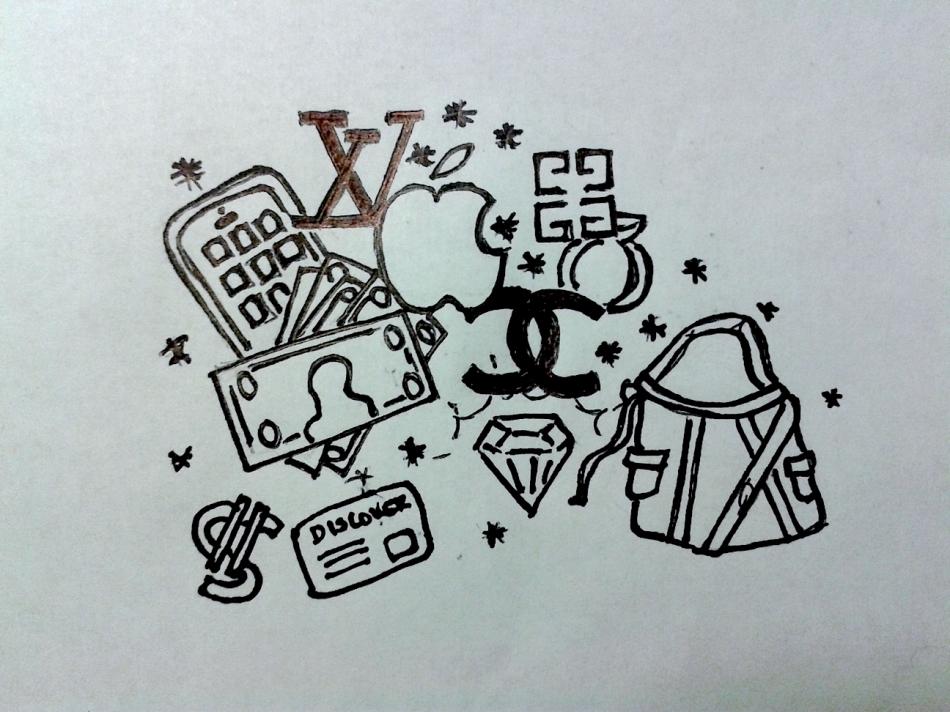Woes of consumerism
In the world of advertising, the average person is exposed to approximately 600 to 625 advertisements daily, according to a study done by Media Matters, a nonprofit research organization analyzing and monitoring the information in the media. This form of broadcasting leads to a compulsive desire to spend.
It is no wonder that everyone seems to be running out to buy Apple’s new iPhone 6. About ten million people successfully secured this new device within three days of its unveiling, according to the Wall Street Journal. However, what they have failed to do is stop and compare. With only a few changes in the hardware and a slightly updated camera, the iPhone 6 is really no better than its year-old predecessor, the iPhone 5s.
However, marketing techniques are so cunning that it does not stop there. The fashion industry has a knack for manipulating people into buying the most expensive product on the market. Burberry admitted in March 2013 that the company raised the prices of its clothing in order to attract higher end customers, according to Business of Fashion, an online style magazine.
It seems particularly ironic, but the logic is that people are more compelled to buy expensive products. They believe that there is more value to something that is placed at a higher cost. While it may be true in some cases, the fashion industry has seized upon this piece of knowledge and drained the consumer’s wallet in the process.
Advertising is ultimately a bank account’s worst enemy. Marketing companies have swiftly learned to manipulate and take advantage of the average, ignorant consumer. A new slogan and an insistence that a certain product is “new and improved” has the average consumer convinced to buy an unnecessary product. So where is all this money coming from to pay for compulsive buying habits? Well, the hard truth is, there is no money. Credit card debt has been rising 17% every year for the past 42 years, according to Forbes.com.
Senior Sana Datar considers a solution to this problem.
“I’m not a big Thoreau fan, but I think he was onto something when he said, ‘Simplify, simplify, simplify.” Datar said. “We don’t all need to cut down on all of our consumption and go live in the woods, but to a certain extent we need to be realistic about what we need and want. If you have money to throw around then go ahead and buy what you want, but if you’re a middle class person who just wants to boost your social image, is it really worth it? I think people need to just reevaluate what they need.
Ultimately, it is all an endless cycle. Compelled by advertising, people tend to buy more than they make. They fail to consider the consequences and eventually contribute to the growing amount of credit card debt that America holds. This cycle is so ingrained in our system that common sense is the last solution for this issue.
Your donation will support the student journalists of Woodbridge High School. Your contribution will allow us to purchase equipment and cover our annual website hosting costs.







